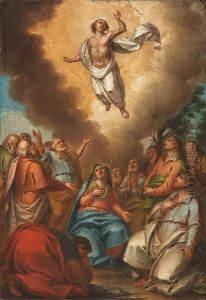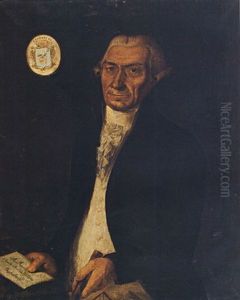Nicholaos Kantounis Paintings
Nicholaos Kantounis was a significant Greek painter, particularly known for his contributions during the late 18th century and early 19th century. He was born in 1773 in Zakynthos, which was then under Venetian rule. Kantounis is often associated with the Heptanese School, a regional style that developed in the Ionian Islands, blending local traditions with Western European artistic trends.
Kantounis's early life and training are not extensively documented, but it is believed that he was initially taught by local artists on his native island. His work was primarily influenced by the Italian Baroque and the Renaissance, which were predominant styles taught in the region due to the Venetian occupation. Despite the limited information on his formal education, Kantounis developed a distinctive style that combined these Western influences with the Orthodox iconographic tradition.
Throughout his career, Kantounis primarily focused on religious subjects, producing a significant number of icons and frescoes for churches. He worked on several commissions for the decoration of churches in the Ionian Islands and mainland Greece. His style is characterized by a sense of realism, attention to detail, and a delicate use of color, which set his work apart from many of his contemporaries.
Kantounis's contribution to Greek art is also important in the context of the Greek War of Independence (1821-1830), during which Greece sought to liberate itself from Ottoman rule. Although there is no direct evidence of his involvement in the war, the period was one of national awakening for Greece, and artists like Kantounis played a role in cultivating a sense of national identity through their work.
Nicholaos Kantounis passed away in 1834, leaving behind a legacy as one of the key figures of the Heptanese School. His works are considered an integral part of Greek cultural heritage and continue to be studied for their artistic and historical value.

